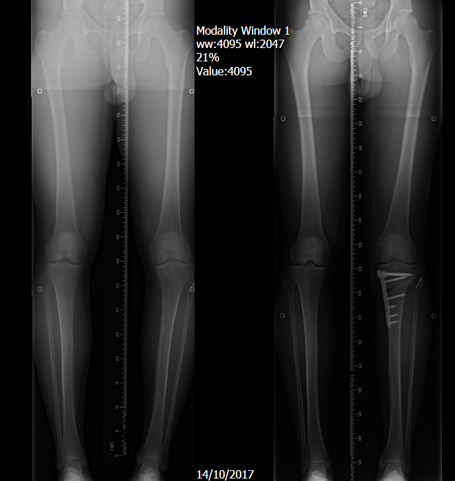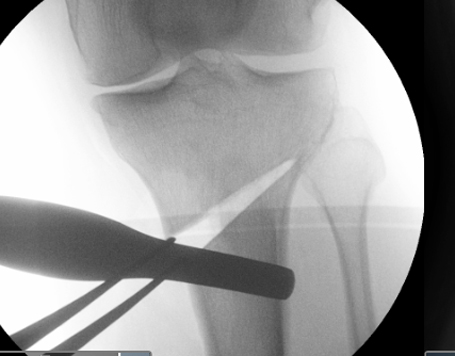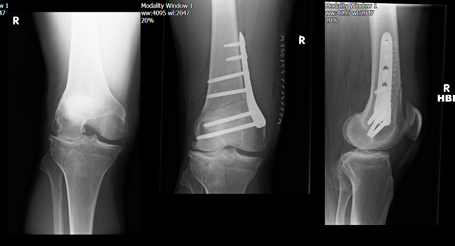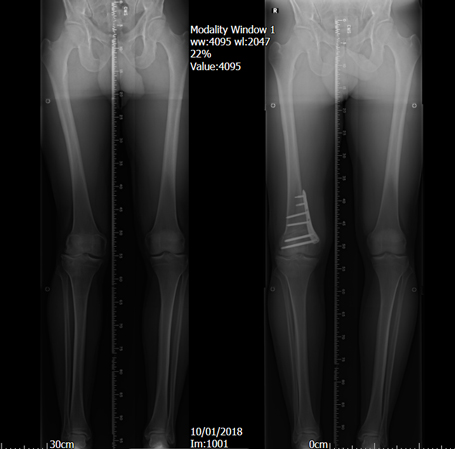Procedures
Knee Osteotomy
Osteotomy is an operation most suited to younger and more active patients with osteoarthritis confined to single knuckle or single compartment of the knee, and in whom the alternative surgical treatment would be either partial or total knee replacement. It is particularly useful for those patients who wish to continue participating in sporting activity.
The operation involves making controlled cuts in the bones above, or more usually below the knee, and using these controlled cuts to slightly over-correct a mild bow leg or knock knee deformity associated with localised arthritis. Once the desired correction has been achieved, the osteotomy is fixed with a strong but lightweight plate and screws. Correcting the alignment of the leg in this way reduces pressure on the arthritic compartment of the knee and can significantly delay the progression of arthritis. Osteotomy can be used in conjunction with other techniques to stimulate the healing of cartilage defects and can also be combined with ligament reconstruction. Osteotomy is a major operation and following it a short period of weight bearing using two crutches is required, which may be of several weeks duration.
The principle advantage of osteotomy in young patients is that it preserves the patients own knee joint, thus delaying the need for a knee replacement usually for between eight and ten years. Risks associated with osteotomy are similar to those associated with knee replacement.
A more detailed description of Knee Osteotomy, including information on the advantages and disadvantages of osteotomy vs knee replacement, can be found at the Osteotomy Expert Group website here.
Further information on rehabilitation following Knee Osteotomy can be found here.





